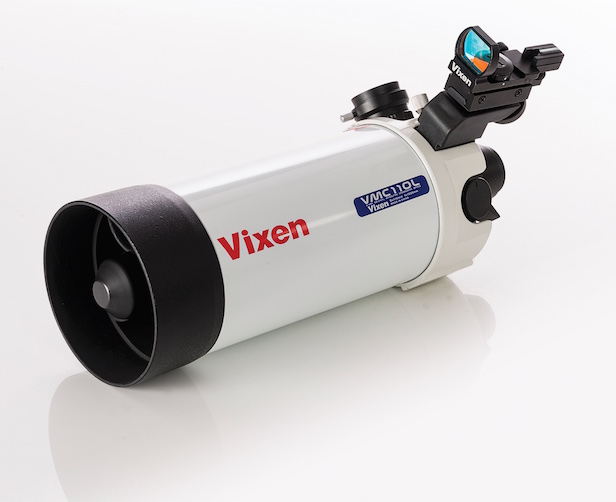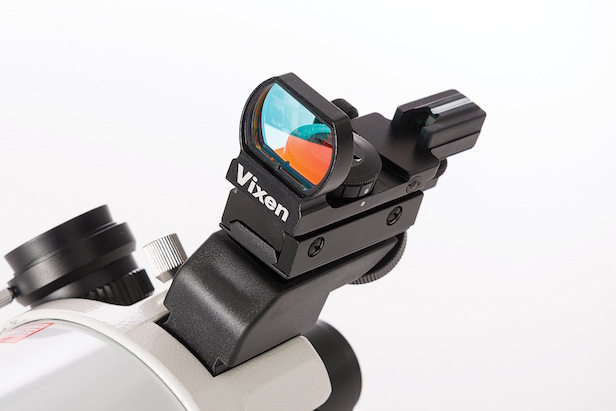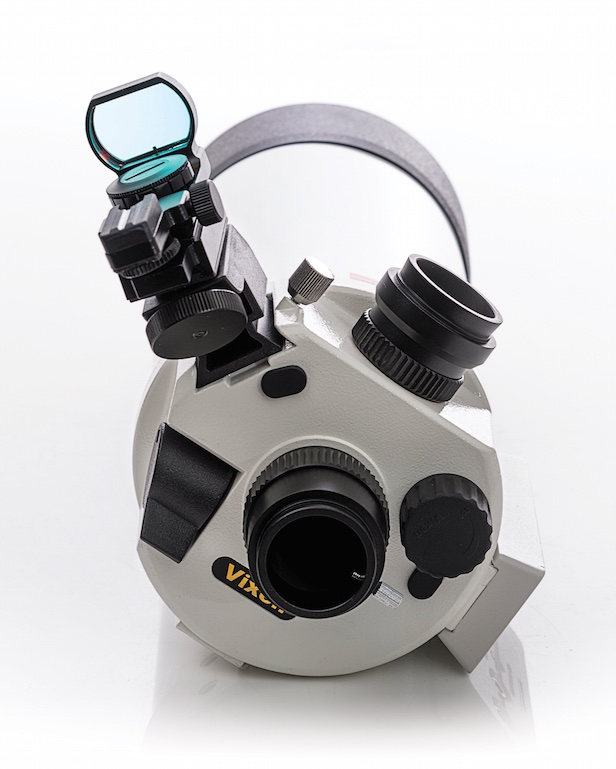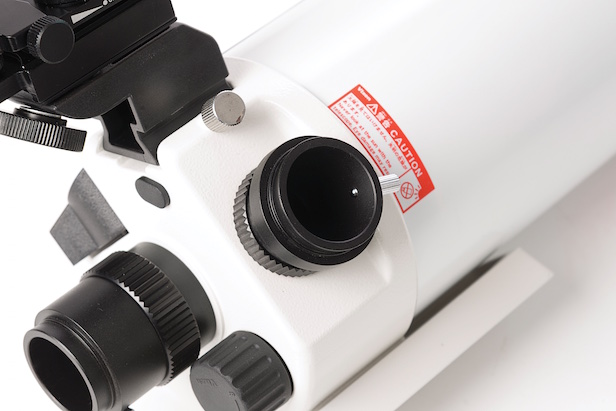Review: Vixen VMC110L Maksutov-Cassegrain telescope
Good things come in small packages, and this Maksutov-Cassegrain is a testament to that exactly

Telescope Advice
Cost: £395 (approx $542.60)
From: Opticron
Type: Maksutov-Cassegrain
Aperture: 4.33”
Focal length: 40.75”
Best for…
Beginners
Medium budget
Planetary viewing
Lunar viewing
Bright deep-sky objects
Basic astrophotography

We had a very positive and enjoyable experience with Vixen’s portable Maksutov-Cassegrain telescope, and based on its build and optics, we would strongly recommend this telescope to a beginner. You can also utilise its unique flip mirror to get stuck into some astro imaging.
Let’s begin with what comes with the package. The minor, but still essential accessories include the red dot finder and the mount rail. The red dot finder is of very good quality and easy to attach, and the mount rail is of a dovetail design, meaning it will be compatible with most mounts. The VMC110L itself, with VMC meaning ‘Vixen’s original Maksutov-Cassegrain’, is superb. Its design optimises its impressive aperture and focal length to create a generous light-capturing capability. The telescope’s size is the first thing that catches the eye, as it is relatively tiny. The Cassegrain aspect of the design allows a long focal length in a short tube of only 360 millimetres (14 inches). When you unite this with the fact that the telescope weighs only 2.1 kilograms (4.6 pounds), it makes for a perfect transportable, grab-and-go telescope. With its sturdy metal construction it will be sure to survive a few bumps and knocks on its travels.
Its open-tube design is great to avoid overheating, as it will allow the cool fresh air to circumvent throughout the equipment. However, this does require more attention for the cleanliness of the mirror, as it will be more vulnerable to dirt and dust. An incredibly unique feature on this telescope is the ability to flip the mirror focus between the back plate and a 90-degree eyepiece on the side of the tube. This allows the user to switch effortlessly between astrophotography and observation.
 In order to use the telescope for astrophotography, all that needs to be attached is a 42-millimetre (1.7- inch) T-ring to the back plate, and you should be ready to go. Based on the specifications alone, we would recommend this telescope for photographing very bright objects. Given the aperture and focal length of the telescope, this provides a respectable focal ratio of f/9.4. This is best suited for observing the brighter celestial objects, including some of the more flamboyant deep-sky objects. This sort of target is ideally suited for an astronomer who is learning the ropes. If you wanted to try and tackle harder targets with a lower magnitude, a telescope with a lower focal ratio would be better suited.
In order to use the telescope for astrophotography, all that needs to be attached is a 42-millimetre (1.7- inch) T-ring to the back plate, and you should be ready to go. Based on the specifications alone, we would recommend this telescope for photographing very bright objects. Given the aperture and focal length of the telescope, this provides a respectable focal ratio of f/9.4. This is best suited for observing the brighter celestial objects, including some of the more flamboyant deep-sky objects. This sort of target is ideally suited for an astronomer who is learning the ropes. If you wanted to try and tackle harder targets with a lower magnitude, a telescope with a lower focal ratio would be better suited.
When the Vixen spyglass got put to the test the sights were fantastic, especially given the price and capabilities of the telescope. We attached the telescope to a Porta II altazimuth mount and had a 25mm (one inch) Plössl eyepiece at hand in order to see what we could find. Given that the telescope has a light-gathering power of 247x, the 25-millimetre eyepiece gave us a magnification of 41x. To kickstart the observing session, we aimed for the biggest target in the sky, the Moon. The Moon shone brightly with 87 per cent luminosity and a face full of craters and mares, and the VMC110L showed these in much clarity.
Next we turned to the double star in an ever-present constellation in the Northern Hemisphere, Ursa Major, known as Mizar and Alcor. These stars, shining with magnitudes of 2.2 and 3.95 respectively, were shining clearly and there appeared to be no aberration. To test out another star we turned to the second-brightest star in the sky behind the Sun, Sirius. The optics rendered a star flickering with a variety of colours, which was a very enjoyable sight.
 Before the Andromeda Galaxy (M31) disappeared below the horizon, we decided to get a quick look at it while it was located around the 30-degree azimuth latitude. The central concentration of light was extremely noticeable when it was located in the field of view, and we even caught a slight sight of the dark dust trails.
Before the Andromeda Galaxy (M31) disappeared below the horizon, we decided to get a quick look at it while it was located around the 30-degree azimuth latitude. The central concentration of light was extremely noticeable when it was located in the field of view, and we even caught a slight sight of the dark dust trails.
Using the aforementioned feature, the flip mirror, you can get some amazing images of these objects while being able to change between observing it though an eyepiece and photographing it. One issue with this flip mirror is the collimation. Although it did not happen with our review model, if the telescope were to become out of focus, the fact you can have two focal points would cause an issue. In the manual they recommend contacting your nearest Vixen dealer if that were to occur.
Overall, the Vixen VMC110L ticks all the boxes for a beginner’s telescope. It’s easy to transport, it has great optics that produce clear views and if you fancy a new challenge, you can use it for a bit of astrophotography. The flip mirror feature is a great feature to have, and we have not seen it on many other telescopes. Obviously, you would still need to purchase a tripod and mount to harness the full potential of this telescope, but a simple alt-azimuth mount should do the trick, and its dovetail mounting joint should be compatible with most mounts. Using an equatorial mount would be ideal for tracking the motion of the stars as they move across the night sky, but that’s not essential unless you are doing long exposure times, which this telescope is not really best suited for.
Keep up to date with the latest reviews in All About Space – available every month for just £4.99. Alternatively you can subscribe here for a fraction of the price!




